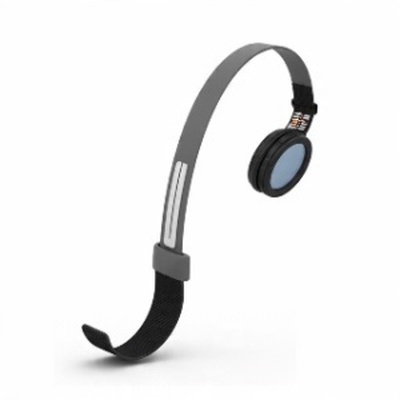HR Sensing Goggle Strap: Swim With Data
Body
Swimming looks calm from the pool deck, but under the surface your heart is busy. Most swimmers guess how hard they are working by how their arms feel or how loud they breathe. A runner can check a watch and see heart numbers in a second. In the water that same watch slips, and a chest strap floats away. The HR Sensing Goggle Strap fixes this old problem with one clever idea: it puts a tiny heart‑rate sensor on the goggle strap you already wear. Because the strap rests against the soft skin at your temple, it can read every beat without moving or hurting. This article tells the whole story in clear, simple words so anyone can understand. You will find six short headlines, each followed by a long, useful section. After that comes a quick conclusion and answers to common questions. By the end you will know how the HR Sensing Goggle Strap works and why it can make every swim smarter and safer.
HR Sensing Goggle Strap Explained Simply
The HR Sensing Goggle Strap looks almost like a normal silicone band, but one side hides a small plastic pod. Inside that pod live three tiny parts: a light source, a light sensor, and a smart chip. The light source is usually two green LEDs. They flash gentle light through the thin skin at your temple many times each second. Blood absorbs this light in one way when the heart squeezes and in a different way when the heart relaxes. The light sensor—called a photodiode—measures how much light comes back. Then the smart chip turns that flashing pattern into a beats‑per‑minute number.
This number is sent by Bluetooth® or ANT+ to a smartwatch or phone. You pair the strap once and it reconnects by itself every swim after that. Many straps also store data on their own. So even if your phone waits in a locker, you still get a full heart‑rate graph later. The battery inside the pod lasts from eight to twenty swimming hours, depending on the model. A magnetic USB cable refills it in about an hour. Because the pod weighs less than two paper clips, it does not change how your goggles feel.
Most swimmers forget the sensor is even there—until their watch shows live heart numbers while they glide down the lane. This simple design means you can finally measure effort in the water the same way runners and cyclists do on land, without bulky belts or shaky wrist readings.
Temple Sensor Gives Accurate Heart Readings
People often ask why the HR Sensing Goggle Strap sits on the temple instead of the wrist or chest. The answer is comfort, signal strength, and stability. The temple has very thin skin and steady blood flow. That makes it a perfect window for optical heart‑rate reading. Your goggles already press gently on that spot, so the pod stays still. In tests, temple straps match medical ECG belts within three beats per minute during easy laps and within five beats during sprints. Those numbers beat most watches—even on land.
Chest straps, by contrast, need metal pads to touch skin. They work on treadmills but slide down when you push off the wall. Tightening the band can pinch ribs and still does not stop bubbles from breaking the signal. Wrist trackers have another problem. They sit on moving arms that twist, splash, and flex dozens of times each length. Water slips between the LEDs and the skin, so the light scatters and the reading jumps around. Bluetooth signals also travel poorly through water, so even a good beat can drop before it reaches your watch.
The temple solution avoids all that. The pod collects beats while your head is under water, saves them, and bursts the data each time you breathe. That means your training file is complete when you finish, no gaps, no guessing. And because you feel no tight belt or heavy watch, you can focus on stroke technique rather than fiddling with gear. Comfort plus accuracy makes the temple strap the clear winner for swimmers who care about honest numbers.
Easy Setup In Just Five Steps
One strong point of the HR Sensing Goggle Strap is its simple setup. Even if you are not a “tech person,” you can be ready in minutes. Follow these five steps the first time, and after that it takes seconds.
-
Replace or clip. Take your goggles and slide out the old strap. Thread the new sensing strap through the eyelets exactly the same way. If you bought a clip‑on model, open the hinge and snap it over the existing band.
-
Place the pod. Move the pod so it sits just outside the corner of your eye, directly on bare skin. Keep hair, cap edges, or goggle skirt away from the window.
-
Find good tension. Put on the goggles and tighten only until they seal. Too tight can tilt the pod; too loose can leak water and shake the sensor.
-
Pair once. Open your watch or phone app, choose “Add Heart‑Rate Sensor,” and select HR Sensing Goggle Strap from the list. Accept any prompt. Pairing is now locked.
-
Test a lap. Swim an easy 50 meters. Watch your heart rate rise smoothly from resting to a light zone. If the reading freezes or jumps, nudge the pod forward or back by a few millimeters and try again. When it looks right, mark the spot with a tiny dot of waterproof ink.
From now on you need only step 3 each swim—strap on goggles, adjust tension, and dive. The pod wakes automatically, pairs automatically, and starts logging beats before your hands touch the water.
Using Heart Zones For Smart Training
Swimming farther does not always mean swimming better. To improve health, speed, or endurance, you must work at the correct effort. Heart‑rate zones turn effort into clear numbers. Common plans use five zones, each a slice of your maximum heart rate.
-
Zone 1 (50–60 %) – very easy, perfect for warm‑up, cool‑down, or easy kicking.
-
Zone 2 (60–70 %) – comfortable pace that builds aerobic base and burns fat.
-
Zone 3 (70–80 %) – moderate tempo that improves stamina and technique under gentle stress.
-
Zone 4 (80–90 %) – hard threshold that raises lactate limit, making race pace easier.
-
Zone 5 (90–100 %) – all‑out sprint effort for short bursts of power and speed.
With the HR Sensing Goggle Strap, you see your zone live on your watch or, in premium models, inside the lens itself. If your coach says “25‑minute aerobic swim in Zone 2,” you glance and keep the number steady. Drift above 70 %? Ease your kick and lengthen your stroke. Dip below 60 %? Add a bit of pull. During 8×100‑meter threshold repeats, you can check that each length stays in Zone 4 from push‑off to finish wall. On sprint sets, you watch peak heart rate at the wall and rest until it drops to your planned recovery number before blasting again.
Over weeks, the data shows clear progress. Your Zone 2 pace gets faster while the heart rate stays the same. Zone 4 repeats feel smoother. If your heart rate climbs for the same pace, you know fatigue is coming and can schedule a light day. Thanks to honest numbers, you train smarter, avoid over‑training, and reach goals faster.
Choosing The Best Strap For You
There are several HR Sensing Goggle Strap models on the market. Picking one is easy when you match features to your needs.
-
Device compatibility. Do you use Apple Watch or an Android phone? Any strap with Bluetooth works. If you use a Garmin or Wahoo bike computer, choose a model that also sends ANT+.
-
Battery life. Pool swimmers who train three hours a week can live with an eight‑hour battery. Open‑water or Iron‑distance athletes might want fifteen hours or more.
-
Data storage. Some straps must stream live. Others can store data on internal memory and sync later. If your pool bans watches on deck, pick a memory model.
-
Comfort factors. Look for soft silicone, rounded pod edges, and a profile no thicker than two coins. If you wear a tight cap, test that the pod does not make a bump.
-
Extra features. Premium smart goggles show heart rate inside the lens and even provide swim metrics like stroke count. They cost more but save glancing at your wrist.
-
Budget reality. Basic straps start near ₹4 000 (about $50). Mid‑range memory models cost ₹10–15 000 (about $120–180). High‑end smart goggles can top ₹40 000 (about $480). Buy what you will use weekly, not what simply looks flashy.
Read two user reviews, check return policy, and choose with confidence. The right strap is the one that fits your gear, your face, and your training style.
Simple Care Tips For Long Life
The HR Sensing Goggle Strap is built for water, but a one‑minute habit keeps it fresh:
-
Rinse in fresh water. Chlorine and salt break down silicone and cloud the sensor window. After each swim, hold the strap under cool tap water, flex the band, and let chemicals wash away.
-
Dry in shade. Pat the pod with a soft cloth and hang the strap in a cool spot. Heat and UV rays age batteries and plastic.
-
Top‑up charge. Lithium cells like partial charges. Ten minutes every two or three swims keeps power between 30–80 %, the sweet zone for long life.
-
Update firmware. Open the companion app once a month and click “update” if prompted. Software tweaks can improve accuracy and battery life.
-
Inspect weekly. Look for cracks near clips or cloudiness on the lens. Early fixes cost little; waiting can drown a pod.
Follow these steps and the strap should outlast several pairs of goggles while still reading beats as clearly as day one.
Conclusion
The HR Sensing Goggle Strap changes swim training from guesswork to guided precision. By placing a tiny, gentle sensor on the temple, it captures heart‑rate numbers that chest straps and wrist watches miss in water. Setup takes minutes, wearing it feels like nothing, and the live data helps you stay in the exact zone your workout needs. Whether you swim for fitness, race times, or triathlon medals, this smart strap makes every lap count. Treat it to a quick rinse, a light charge, and a cool dry place, and it will serve you stroke after stroke for many seasons to come.
Frequently Asked Questions
Q 1 – Will the strap fit my goggles?
Most models fit standard silicone bands 6–10 mm wide. Clip versions snap onto many popular goggles. Integrated smart goggles come with the strap built in.
Q 2 – Does Bluetooth work underwater?
Radio signals fade in water, so the pod stores beats and sends them when your head surfaces or when you rest at the wall. Your session graph is still complete.
Q 3 – How accurate is temple sensing?
Independent tests show an average error under three beats per minute compared with hospital ECG belts—enough accuracy for all training zones.






Comments